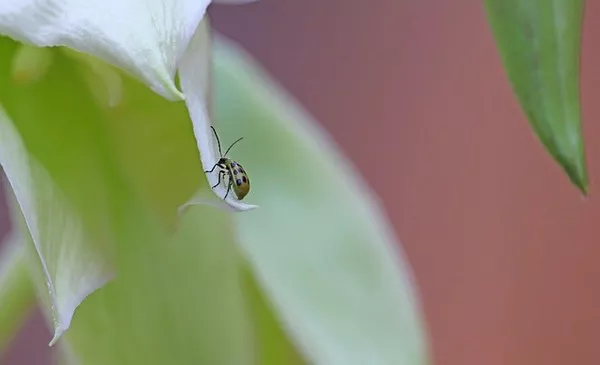Yucca plants, with their striking appearance and adaptability, have captured the attention of gardeners, landscapers, and nature enthusiasts alike. One of the intriguing aspects of these plants is their potential for vertical growth. While yucca plants are known for their distinctive appearance and low maintenance requirements, the question of how high they can grow remains a topic of interest. In this article, we delve into the factors that influence the vertical growth of yucca plants, the different species known for their varying heights, and the care practices that can encourage their growth.
Factors Influencing Vertical Growth
The height that yucca plants can attain is influenced by a combination of genetic factors, environmental conditions, and care practices. Yucca plants belong to the Agavaceae family and are renowned for their ability to thrive in diverse climates, from deserts to coastal regions. Their vertical growth is largely determined by the following factors:
1. Species and Variety:
Yucca plants comprise various species and varieties, each with distinct growth patterns. Some species are naturally inclined to be taller, while others remain more compact. For instance, the Yucca elephantipes, also known as the spineless yucca or giant yucca, is renowned for its towering height compared to the Yucca filamentosa, which tends to stay relatively shorter.
2. Genetics:
Genetic makeup plays a crucial role in determining the potential height of a yucca plant. Just as different individuals of the same species can vary in height, so can yucca plants. Crossbreeding and hybridization efforts have led to the development of cultivars with specific growth traits.
3. Growing Conditions:
Environmental factors, including sunlight, temperature, and soil quality, profoundly influence the growth of yucca plants. Adequate sunlight exposure is essential for optimal growth. Yucca plants thrive in well-draining soil, and poor drainage can hinder their growth. Temperature extremes, especially frost, can impact growth and survival.
4. Care Practices:
Proper care practices, such as watering, fertilization, and pruning, contribute to healthy growth. Overwatering can lead to root rot and stunted growth, while regular fertilization can provide the necessary nutrients for vertical expansion. Pruning dead or yellowing leaves encourages the plant to allocate more resources to new growth.
Species with Notable Heights
Several yucca species are known for their impressive vertical growth, making them standout choices for landscapes and indoor spaces that require a touch of grandeur. Here are a few notable species:
1.Yucca elephantipes: This species, commonly referred to as the giant yucca or spineless yucca, is celebrated for its substantial height. In its natural habitat, it can grow up to 30 feet (9 meters) tall. As an indoor plant, it generally reaches heights of 6 to 8 feet (1.8 to 2.4 meters), making it a striking addition to interior décor.
2. Yucca rostrata: Known as the beaked yucca or Big Bend yucca, this species can reach remarkable heights of up to 15 feet (4.5 meters). It features tall, narrow, blue-green leaves that create an elegant focal point in gardens and landscapes.
3. Yucca faxoniana: Native to Texas and Mexico, this species, also called the Carneros yucca, can attain heights of 10 to 15 feet (3 to 4.5 meters). Its distinctive appearance, characterized by robust leaves and a visually appealing form, makes it a prized choice for xeriscapes.
Encouraging Healthy Vertical Growth
To ensure that yucca plants achieve their maximum vertical potential, gardeners and plant enthusiasts can follow several care practices:
1.Sunlight: Yucca plants are sun-loving species. Placing them in locations with ample sunlight exposure, whether indoors or outdoors, is essential for robust growth. When cultivating yuccas indoors, ensure they receive direct sunlight for a significant portion of the day.
2. Well-Draining Soil: Yucca plants thrive in well-draining soil that prevents water from pooling around their roots. A mixture of sandy soil and organic matter can create an ideal growing medium.
3. Moderate Watering: While yuccas are drought-tolerant, they still require regular watering during their growing season. Allow the top inch or two of soil to dry out between waterings to prevent overwatering, which can lead to root rot.
4. Fertilization: Providing appropriate nutrients can contribute to healthy growth. Fertilize yucca plants with a balanced, slow-release fertilizer during the growing season (spring and summer) to support their vertical expansion.
5. Pruning: Remove dead or yellowing leaves to promote new growth and direct the plant’s energy towards vertical expansion. Be cautious not to remove too many leaves, as they are essential for the plant’s photosynthesis process.
Conclusion
The impressive vertical growth of yucca plants adds a touch of grandeur to gardens, landscapes, and indoor spaces alike. The heights that yucca plants can attain are influenced by a combination of factors, including species genetics, environmental conditions, and care practices. Species such as Yucca elephantipes, Yucca rostrata, and Yucca faxoniana stand out for their remarkable heights, making them sought-after choices for horticultural projects.
Cultivating healthy yucca plants with optimal vertical growth requires attention to sunlight, soil drainage, watering, fertilization, and pruning. By providing the right conditions and care, gardeners and plant enthusiasts can witness the full potential of these stunning plants as they reach for the skies, adding a touch of natural elegance to their surroundings.


